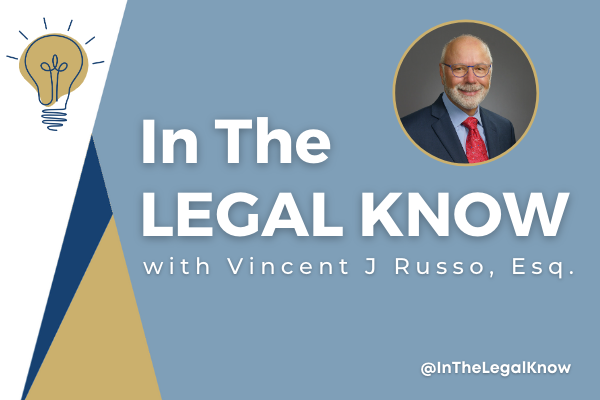Watch “In The Legal Know” with Vincent J. Russo Vincent appeared on CFN Live on…

Surviving the SECURE Act – Roth IRA Conversions
The concept of converting a traditional IRA to a Roth IRA has been around for a while. However, thanks to the SECURE Act, it may be a more beneficial retirement and tax planning strategy. The way the conversion typically works is you roll over assets from a traditional IRA into a Roth. The withdrawal of the traditional IRA monies will be subject to tax liability, but your remaining assets in the Roth IRA will grow tax-free after the conversion.
Required Minimum Distributions
As stated above, thanks to the SECURE Act, there is a delay in the required minimum distributions (RMDs). This delay will likely result in larger account balances in traditional IRAs, which could mean more tax liability upon withdrawal. This is especially true if your non-spousal beneficiaries (such as your children) are already in their highest-earning years.
Pass Along Roth Assets
Although your non-spousal beneficiaries must still take a full distribution of the Roth IRA within 10 years of your death, they can let the Roth account grow then take the entire distribution in year 10 with no tax consequences since the distribution from a Roth account are tax free. Now that the distributions must be made within 10 years, it may be advantageous to pass along Roth assets as opposed to traditional IRA assets.
It is important to note that paying a large tax bill as a result of a Roth IRA conversion may have a significant impact on your own retirement, so the decision to convert to a Roth IRA should not be made lightly. I recommend that you consult with a qualified professional before taking any action.




Comments (0)